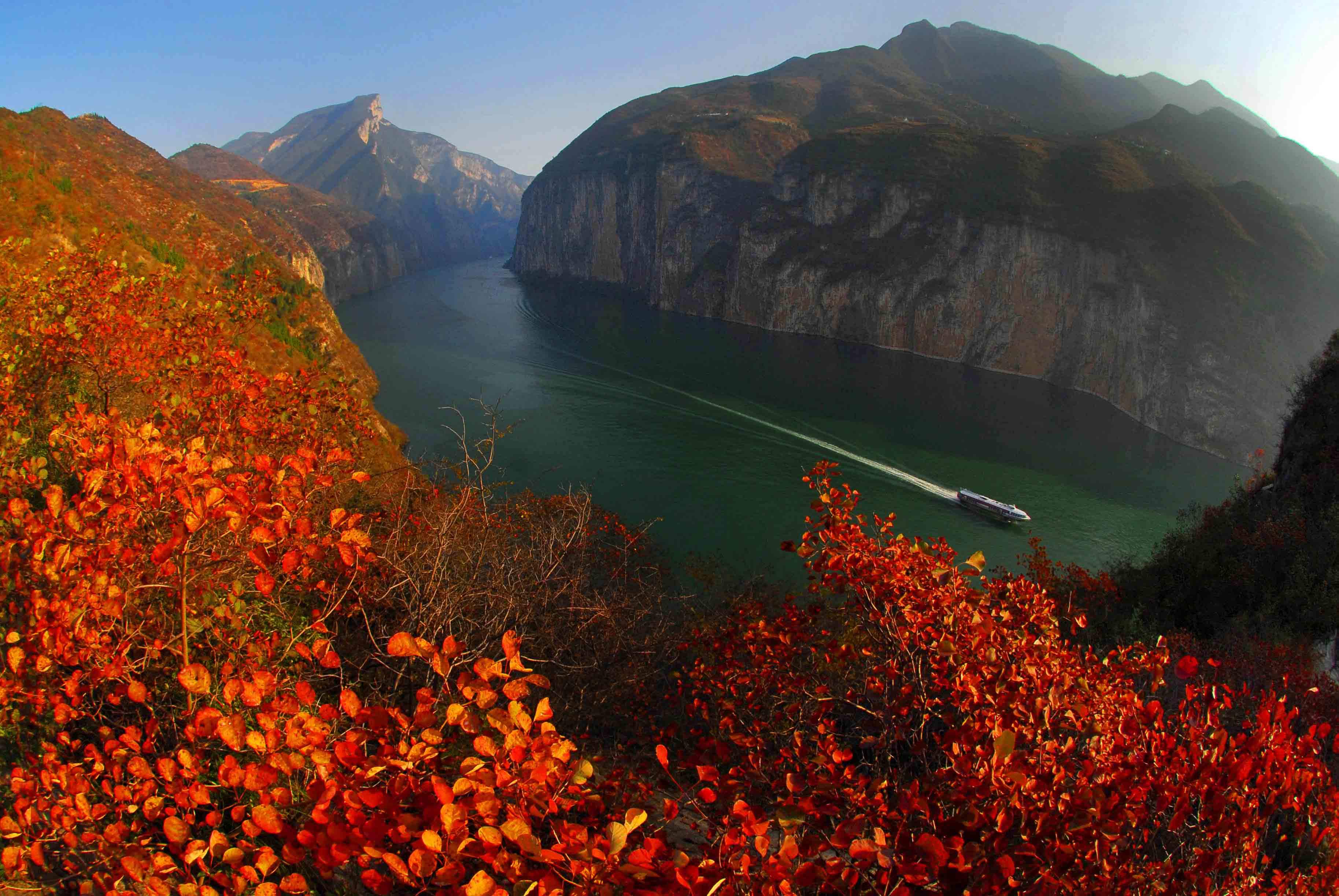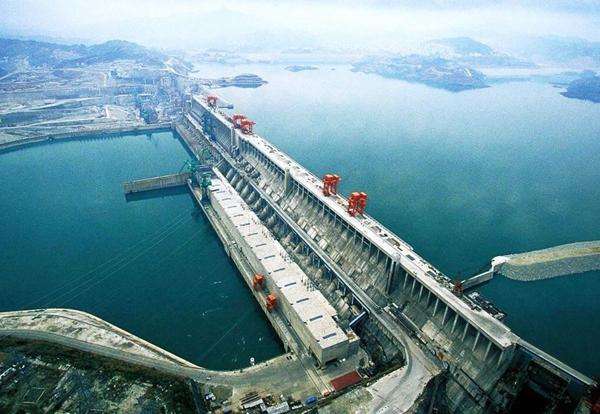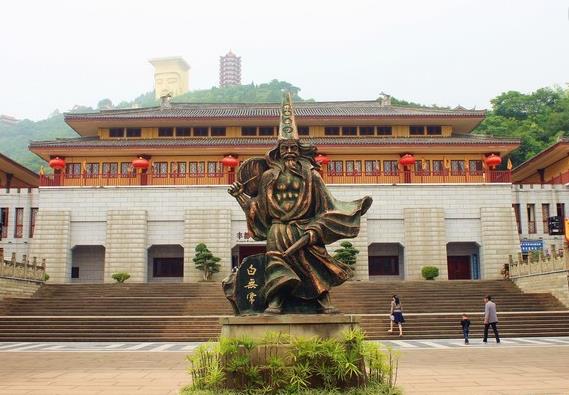24 Hours Hotline: +86 137-3541-1378
Email:beijing@tripstoshanghai.com
24 Hours Hotline: +86 137-3541-1378
Email:beijing@tripstoshanghai.com

Introdution
Snaking
its way 6,300 kilometres from western China’s Qinghai-Tibet Plateau to
the East China Sea, the Yangtze River stretches nine provinces and
serves as a drain for 695,000 square miles of land. It is less in length
only to the Amazon and Nile, and spans so many regions that it has
acquired half a dozen names. In the high Qinghai-Tibet Plateau, the
Tibetans title it Dri Chu—Female Yak River. The Chinese in the area know
it as Tongtian He, Travelling-Through-the-Heavens River. Where it
borders Sichuan and runs through Yunnan, it is referred to as Jinsha
Jiang, River of Golden Sand. Often the word Wanli prefixes the common
Chang Jiang (Long River), designating it Ten Thousand Li River. Only in
the lower reaches does this great flood go by its name common to
foreigners: Yangtze.
For over two centuries the Yangzte has served as a transportation highway and commercial thoroughfare. Ocean-going vessels can navigate up the river for 1000 km and steamers can travel as far as Yichang, 1600 km from the sea. A quarter of China’s ocean-going cargo enters the river between Shanghai and the sea. Shanghai is known as the gateway to the Yangzte, spanning the Huangpu tributary just south of the river’s mouth. As China’s largest metropolis, Shanghai is an active hub of river commerce with thousands of boats crowding its harbour. Towering commercial ships stand out against the industrial shores, and countless ‘junks’, weather and sea-worn vessels topped with browning quilted sails, navigate the congested waterways.
Other important cities dot the shore of the Yangzte, but perhaps none equal the historic significance, both triumphant and tragic, of Nanjing. Dating back at least two and a half millennia, the ‘Southern Capital’ has seen eight dynasties including the celebrated Ming in all of its cultural splendour. Nanjing has become associated with calamity since the Japanese devastated it in 1937. Destruction, mass murder, and torture desecrated this prized city ultimately claiming 150,000 civilian lives. The Rape of Nanjing is better forgotten for the Chinese who now trade a great deal with Japan. Nanjing now boasts some of China’s most advanced technology and a prestigious university. The city stands as a symbol of Chinese strength and self-sufficiency, a monument of the people on their great river.
Every year the Yangtze deposits massive amounts of silt (more than 170 million cu m/6 billion cu ft annually), that helps make up the Jiangsu Province, a large plain used to grow rice. The fertile plains provide one of the most profitable areas of agriculture in China. Today China accounts for 35% of the world’s rice production. Rice is the world's single most important food crop and a primary food for more than a third of the world's population. China seeks to provide for its increasing population with improved agricultural technology and increase in fertile land. The Yangtze provides crucial irrigation to the Jiangsu Province which continues to produce abundant harvests.
Aside from its transit, economic and agricultural importance, the Yangzte winds through some of China’s most scenic country. The common Chinese saying,‘If you haven’t travelled up the mighty Yangzte, you haven’t been anywhere’, well describes the river’s range of picturesque landscapes. North of the Himalayas at the Yangtze’s origin (elevation 4900 m), the Tibetan Plateau has mighty glaciers and enduring snows which continuously melt into the Yangtze. Winding south and leaving the high country, the river meets the world-renowned Three Great Gorges which tower above it in the western Wu Shan (Witch Mountains). Known in the past for their dramatic beauty as well as religious and historical sites, the Three Gorges have recently received much attention due to the building of the controversial dam. The Yangtze stretches 192 km through the Three Gorges, Xiling, Wu, and Qutang. The perilous Xiling Gorge, furthest down river, often stands shrouded in mists. It threatens weary river vessels with whirlpools, rapids, and water cannons that can easily leave even large watercraft upside down. It is known for its skying walls and the accelerated river beneath them. The Wu Gorge is tranquil and quiet with a deep valley and twelve peaks along its shores. Qutang Gorge boasts great magnificence in a brief eight-kilometre distance. Its scenic shores contain the Meng Liang Staircase, the ancient Plank Road, and the Seven Gate Cave.
Traditionally the Yellow River civilisation of the Han culture has received the most attention in research of ancient Chinese history. Not until recently has the Ba and Chu cultures of the Yangzte River civilisation caught the interest of archaeologists and historians. Serious archaeological work began in China in the 1920s focusing mainly on the Yellow River valley. In the 1970s work reached the more difficult terrain around the Yangtze. As awareness of the cultural richness of the area has increased, so has the threat of losing it. Chinese archaeologists hurry to examine and explore the historical sites and cultural artefacts along the Yangtze that will be submerged beneath the river once it is dammed.
The Three Gorges Dam
One
and a half miles wide and 610 feet tall, the gargantuan Three Gorges
Dam is China’s largest construction project since the Great Wall. The
People’s Republic of China decided to dam the Yangtze in 1994 with a
steel and concrete wall that would take 15 years and over $30 billion to
build. When completed, the dam will contain twice the amount of
concrete of the Itaipu Dam in Brazil, currently the world’s largest. It
will create a five trillion gallon reservoir hundreds of feet deep and
about 400 miles long, able to absorb an earthquake measuring 7.0 on the
Richter Scale. It will allow 10,000-ton freighters to easily navigate
into the nation’s interior and increase agricultural and manufacturing
opportunities. As the world’s largest hydroelectric power plant, the
dam’s turbines are expected to create the equivalent electricity of 18
nuclear power plants.China’s central government revived talk in the mid
1980s about the construction of a massive dam along the Yangtze. In 1919
Sun Yat-sen, the father of modern China, originated the idea of a
hydroelectric dam in the Three Gorges. Chairman Mao Tse-tung proposed
the idea of ‘surprising the goddess of Wu Gorge by creating a huge
man-made lake between the deep canyons.’ The ‘Great Leap Forward’
officially spanned from 1958 to 1960, but dam construction in China
became increasingly frequent after 1950. Only 23 large and medium scale
dams and reservoirs existed in China before 1949. Soon after they became
commonplace and today China has more than 20,000 dams over 15 meters
high, the most of any country in the world. While critics of these
developments are quick to point out that millions of people have
undergone resettlement and dam collapses have caused many fatalities,
advocates emphasise that these dams have been a helpful power source and
a solution to flooding for the Chinese people. The Chinese government
seeks technological advancement and much needed energy that the dam will
provide, and has announced that it will invest US$7.2 billion in the
construction of an electricity grid to be fed by the project. Nine 100
km long power lines will deliver 18 200 MWe over several regions. The
dam is scheduled to be completed in 2009, and as construction continues,
objecting voices continue to sir a whirlwind of controversy.

Environment
The
Yangtze River Water Resources Committee reported that 23.4 billion tons
of sewage and industrial waste were dumped into the Yangtze in 2000.
Currently, certain stretches of the river are unfit for human use, and
many fear that the reservoir created by the Three Gorges Dam will become
a massive cesspool. In 1997 the State Environmental Protection
Administration (SEPA) stated that building the dam would have an adverse
impact on the environment. Riverbank collapses and landslides,
untreated waste, pollution from boats and garbage heaps, and abandoned
buildings containing various toxins are all thought to contribute to a
pond of filth once the waters begin to rise. An unconfirmed report
surfaced in September, 2001, that the Chinese government planned to
spend $2.5 billion to treat water pollution in the reservoir over a 10
year period. The reservoir is scheduled to be filled in 2003 which
requires the clean up of factories, mines and hospitals containing
poisonous hazards which will be submerged. The Yichang-based Three
Gorges Project Corporation reports that two groups have been designated
to develop a strategy and set up geological disaster prevention units.
These groups seek to satisfy the fears of many regarding possible
radioactive waste in industrial plants and hazardous waste and debris
left in houses. Over 1600 factories and mines await flooding, making the
cleanup effort a daunting task with financial and temporal constraints.
Heavy farming and logging along the Yangtze has made it the fourth largest sediment carrier in the world. Erosion along the banks could lead to enough of a water rise to create flooding. Sluices at the bottom of the dam have been designed to flush sediment through and prevent disaster, but such sluices have never operated on such an enormous scale before.
Many are concerned about the endangered species native to the Yangzte. The baiji dolphin, river sturgeon, and finless porpoise exist in small numbers and it feared they will decline with the construction of the dam. Fewer than 100 baiji dolphins exist and although they enjoy the highest level of protection, fishing and river traffic inevitably deplete their numbers. Dams restrict their travel and possibly cut off food supplies. The finless porpoise grows to an average of five feet and lives in the Asian rivers and western Pacific Ocean. Their numbers dwindle because of habitat destruction, warm and shallow waters like those of the Yangzte. Three thousand giant Chinese river sturgeon are accidentally caught by fishermen each year. This enormous fish prefers cool temperatures often eliminated by dams. It is feared that this rare species will dwindle in numbers with the completion of the dam.
Culture
As
cleanup crews scurry to rid the Yangtze River Valley of hazardous
chemicals, Chinese archaeologists hurry to explore and record the
cultural treasures soon to be immersed. Over a thousand sites of
archaeological and historical significance have been found in the Three
Gorges area. Tombs, fossils, ancient inscriptions and other sites reveal
a number of cultures and dynasties of the ancient Chinese people. Many
lament the neglect of the historical sites of the Three Gorges project.
No archaeologists or historians were invited to the planning meetings
and no funds were allocated to preserve any of China’s heritage in the
region. After much criticism and pressure, the central government gave
one percent of the resettlement fund, $60 million of $5 billion, toward
the cultural rescue.

Conclusion
As
20,000 labourers work around the clock, it appears as though the Three
Gorges Dam will be completed despite efforts to stop it. The reservoir
is not expected to reach full depth until 2009, and many continue to
attack the Chinese government and those who support them. International
Rivers Network (IRN) has launched a campaign to boycott Morgan Stanley
Dean Witter & Co. who helped finance the projects. Chinese
journalists have reported the arrest of protestors from the some of the
towns that are going to be submerged. Protestors have been convicted of
‘disturbing Three Gorges Resettlement’ and given sentences of three to
seven years. To many, these charges amount to an infringement of human
rights, and IRN accuses Morgan Stanley of this infringement because of
their investment in the project. Aside from many articles and
accusations, IRN has undertaken a boycott of the Morgan Stanley’s
Discover Card. Political turmoil such as this has kept other investors
away. The World Bank declined to support the Three Gorges Dam on account
of the environmental uncertainties. In 1993 the U.S. withdrew its
support because of environmental concerns and doubts in regard to the
dam’s flood control ability.
It is difficult to predict the future of the Three Gorges Dam. Construction has thus far gone relatively smoothly. In 1999 small cracks were discovered and repaired, but it was acknowledged that little room exists for error in the future if the tight schedule of the central government is to be kept. The completion of the dam will either be the vindication or condemnation of the Chinese government. The dam aspires to provide clean, accessible energy for a large number of the population. It seeks to eliminate the floods that have claimed the lives of hundreds of thousands of civilians. If the dam does in fact prevent flooding, avoid an environmental catastrophe, and provide economically for the million plus people displaced by its reservoir, its success will live up to its size. But failure will draw harsh criticism from many who predicted it. Most likely the result will be a combination of success and failure, and it can only be hoped that the Chinese people end up benefiting from their new great wall.
Prev: West Lake
Next: Terracotta Army
Wechat: Chinaprivatetour
24 Hours Hotline:
+86 137-3541-1378
* Authentic Experiences: Genuine local experiences that immerse you in the true essence of Beijing and beyond.
* Safety First: Highest safety standards with secure activities and reliable transportation.
* Customizable Tours: Flexible itineraries tailored to your interests and needs.
* Local Expertise: In-depth knowledge of Beijing and China, offering exclusive insights.
* Professional Guides: Licensed bilingual guides with over 5 years of experience.
* Comfortable Travel: Experienced drivers and well-maintained vehicles for a smooth journey.
* Sustainable Tourism: Commitment to responsible tourism and supporting local communities.
* Customer-Focused: Personalized service and continuous improvement based on your feedback.
* Free Cancellation: Cancel up to 24 hours before travel for flexibility and peace of mind.
* 24/7 Support: Round-the-clock assistance for any questions or help needed.
1 to 1 tailor-made service from our professional travel advisors for the most sophisticated
Constantly excellent reviews for attraction, hotel and service Competitive price
Local experts provide quality tours Best selected knowledgeable local guides Authentic local restaurants
7*24 hours available to create you a worry-free tour. No Hidden Fees and absolutely no pressure to buy. Secured









Copyright © 2017 Chinabeijingprivatetour.com All rights reserved. 浙ICP备18056007号-2